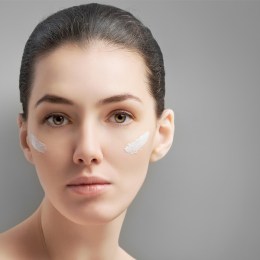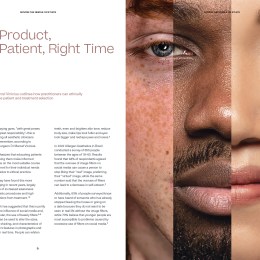Our Online Editor & Dermal Clinician Taneesa Williamson discusses how the MC1R gene impacts pain sensitivity, anaesthesia, and aesthetic treatment customisation for clients with naturally red or auburn hair.
When it comes to aesthetic treatments, one size certainly does not fit all. For clients with naturally red/auburn hair, a specific genetic factor—the MC1R gene—can significantly impact how they experience various procedures, from IPL and chemical peels to injectable treatments. Understanding this gene and its effects can be crucial for providing tailored and effective care.
The MC1R Gene – What you need to know
The MC1R gene, located on chromosome 16, plays a vital role in how our bodies produce pigmentation. It encodes for the melanocortin-1 receptor, a protein found in melanocytes—the pigment producing cells in our skin, hair, and eyes.
This receptor is central in determining the type of melanin our bodies produce: eumelanin (brown) or pheomelanin (red). The balance of these two pigments gives us our unique colouring, but it also affects how we respond to certain aesthetic treatments, particularly in individuals carrying what is often referred to as the “redhead gene.”
How the MC1R gene affects pigmentation
Melanin is not only responsible for our external appearance but is also crucial in other body functions, including vision, as it is present in the retina. The melanocortin-1 receptor (MC1-R) is a molecular switch that triggers the production of eumelanin in response to genetic and environmental signals. When this receptor is activated, melanocytes produce eumelanin, the darker pigment.
However, if the receptor cannot be activated—commonly due to variations in the MC1R gene—pheomelanin, a lighter pigment associated with red hair and fair skin, is produced instead.
Redheads and individuals with lighter Fitzpatrick skin types tend to have more pheomelanin. This genetic variation also correlates with heightened sensitivity to certain aesthetic treatments and pain, making it essential for clinicians to understand the presence of the MC1R gene during consultations.
Clinical implications
Research has shown that individuals with the MC1R gene may have heightened sensitivity to pain and heat. This can make procedures like IPL (Intense Pulsed Light) and chemical peels more uncomfortable. These clients/patients might also experience increased difficulty with anaesthesia, making it harder to numb the skin effectively for treatments like injectables.
The importance of personalised consultations
Given these unique sensitivities, it’s essential for aesthetic professionals to enquire about the MC1R gene during consultations. Knowing whether a client carries this gene can help in customising treatment plans to minimise discomfort and maximise results.
As the aesthetic industry continues to develop and evolve, recognising and adapting to a client’s genetic history/biology with additional consultative questions can further strengthen the care clinicians provide, enhancing results and building trust. By incorporating this knowledge into consultations and treatment plans, this can offer a more personalised and comfortable experience for all clients and/or patients.
References:
- Liem, E. B., Lin, C. M., Suleman, M. I., Doufas, A. G., Gregg, R. G., Veauthier, J. M., Loyd, G., & Sessler, D. I. (2004). Anesthetic requirement is increased in redheads. Anesthesiology, 101(2), 279–283
- Andresen, T., Lunden, D., Drewes, A. & Arendt-Nielsen, L. (2011). Pain sensitivity and experimentally induced sensitisation in red haired females. Scandinavian Journal of Pain, 2(1), 3-6.
Read our latest issue below:
There are 5 ways you can catch up with SPA+CLINIC
- Our quarterly print magazine, delivered to your door. Subscribe here.
- Our website, which is updated daily with its own completely unique content and breaking news.
- Our weekly newsletter – free to your inbox! Subscribe here.
- Our digital magazine – click here to view previous issues.
- Our social media – see daily updates on our Instagram, Facebook & Linkedin




